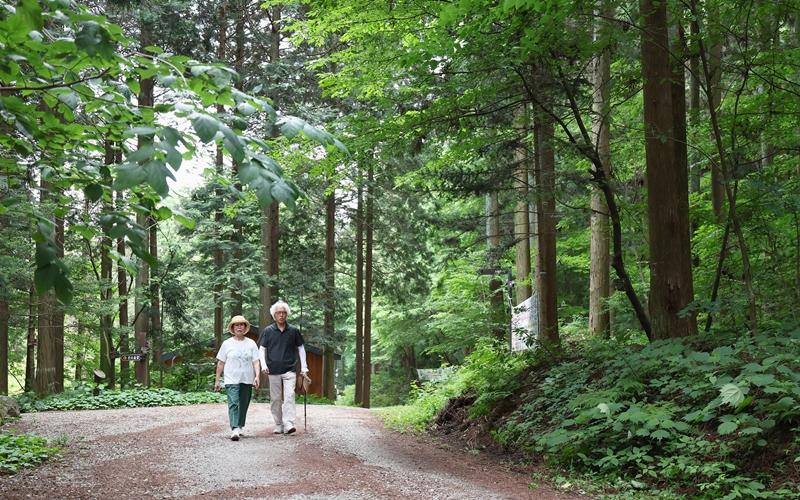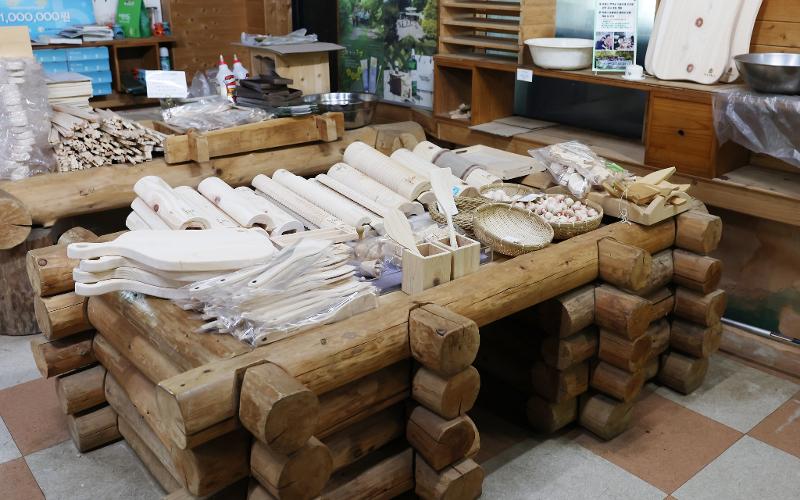
Gwangju native Park Dong-sik and his wife on June 19 walk through National Jangseong Healing Forest in Jangseong-gun County, Jeollanam-do Province.
By Kim Seonah
Photos = Park Daejin
"(In the forest), the air is so good that I'm thinking of taking herbal tonics now."
Park Dong-sik, a native of Gwangju, on the afternoon of June 19 visited National Jangseong Healing Forest in Jangseong-gun County, Jeollanam-do Province with his wife, taking a deep breath with a big smile.
"I always come here once or twice a month," he said. "I feel like my body and mind are both cleansed."
In his mid-70s, Park seemed in far better shape than his peers.
Scientific evidence backs the notion that the air in a cypress forest is a health booster as such trees emit the most phytoncide among coniferous species. The concentration of phytoncide around this forest is around five times higher than in a city.
Phytoncide, a natural antibacterial substance that plants emit to protect themselves from pests and disease, is considered effective in relieving stress, boosting bodily immunity, and calming mind and body.
The National Forest Welfare Institute, where this cypress forest is located, has interactive programs to allow visitors to feel the trees' healing power firsthand. They include lying in a hammock to feel the forest's energy in complete relaxation; "forest yoga" to improve flexibility while breathing in phytoncide; and making pillows using cypress wood.

Crafts made of cypress wood are displayed at this store near National Jangseong Healing Forest. The items for sale include household items such as wooden spatulas, pillows and acupressure massage tools.
Stores around the forest carry craft items made from cypress wood that are usable daily such as spatulas, pillows and acupressure tools.
Visited by over 200,000 people every year, the forest is more than just a tourist attraction or rest area; it drives the regional economy.
The forest's public welfare value is estimated at KRW 15.9 billion, the production inducement effect from tourist visits KRW 70.6 billion and the value-added stimulating effect KRW 43.7 billion won. Thus this forest accounts for over 40% of its region's economy.
So National Jangseong Healing Forest, which boosts human health and props up the regional economy, is an excellent choice to rest body and mind during the hot summer.
sofiakim218@korea.kr